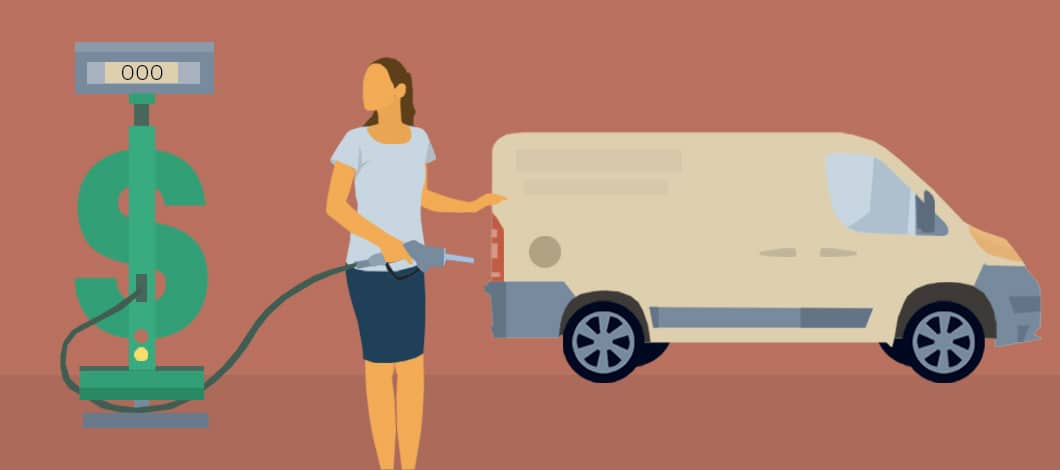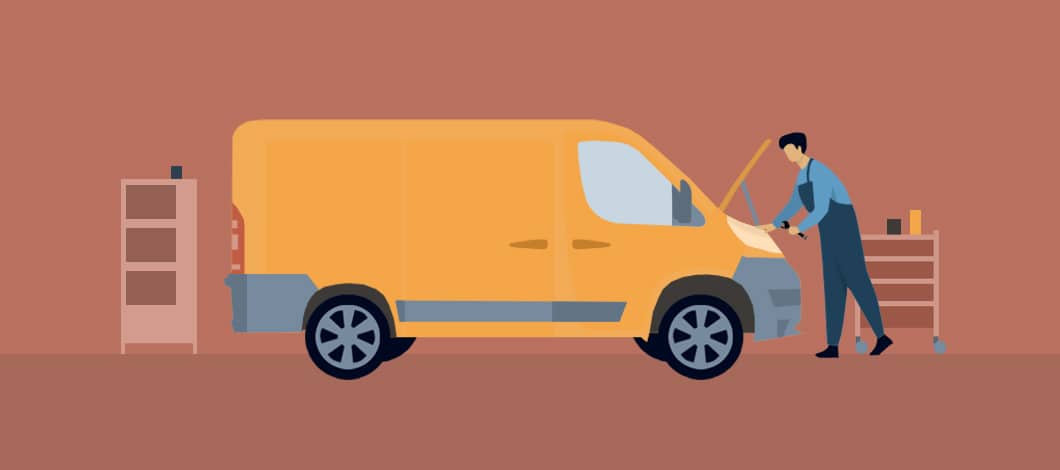Are rising gas prices costing your business money? Here are 10 ways to save money on fuel.
Learn strategies to pay less per gallon while getting more mileage out of each gallon you buy.
1. Use Gas Price Comparison Apps
One of the easiest ways to save gas costs is to use apps with price comparison features. Gas price apps with Global Positioning System (GPS) features let you zero in on gas stations in specific locations and compare prices.
For example, gas station finder app GasBuddy includes a gas price map feature that lets you search for gas prices by zip code and compare prices at different pumps.
2. Participate in Rewards Programs
When you’re looking for how to save money on fuel, consider joining a rewards program. Many credit card providers offer cards with rewards for gas purchases. For example, the American Express Blue Cash Preferred includes 3% cash-back rewards for gas station purchases. Consider getting a dedicated business credit card with rewards features to use for gas purchases.
Many gas chains also offer rewards programs that save you money. For example, Shell has a Fuel Rewards Program where members can save 5 cents per gallon when they refuel at participating stations.

3. Optimize Your Gas Tax Strategy
If you’re in an industry such as trucking where you have to refuel in multiple states, the best way to save on gas taxes is to choose your refueling spots carefully.
Under the International Fuel Tax Agreement (IFTA), your fuel tax reporting is filed through your base jurisdiction, which is defined by where you have your qualified vehicles registered, where you travel and where you maintain operational control and records. One consequence of this is that your taxes aren’t set by where you buy your fuel, but by your base fuel cost, which is your pump price minus your per-gallon state tax.
Because of this, refueling selectively in states and at pumps with low prices can lower your gas tax. Trucking software provider Rigbooks features a state-by-state guide for buying fuel.
4. Claim Your Mileage Deductions
Another tax strategy for saving on gas is claiming mileage deductions. The Internal Revenue Service (IRS) allows you to deduct certain business travel expenses which involve the ordinary and necessary costs of traveling away from home for your business.
To claim these deductions, you must follow strict rules and recordkeeping procedures. For details, see IRS Publication 463.
5. Optimize Regular Driving Routes
If you or your employees are driving to the same places regularly, you may be able to save gas by using more efficient routes to make your rounds. Identify your most common destinations and check whether you might be able to use shorter routes to get there. You also may be able to consolidate trips.
Some driving apps can help you calculate the shortest routes to destinations. For instance, Circuit helps teams of delivery drivers optimize driving routes. If you own a fleet of vehicles, following this step can significantly reduce your fleet operating costs.
6. Observe Good Driving Habits
Another way to use gas more efficiently is by practicing good driving habits. Aggressive driving habits such as speeding, rapid acceleration and hard braking can lower your fuel efficiency by 15% to 30% at highway speeds and 10% to 40% in stop-and-go traffic, according to the U.S. Department of Energy.
Adopting calmer driving habits such as observing the speed limit and easing up on accelerating and braking can be one of the easiest ways to save gas. Avoiding unnecessary idling, using cruise control and minimizing loads in the trunk and on the roof can help, too.
7. Keep Engines Tuned
Vehicle maintenance also helps improve fuel efficiency. Fixing a car that is out of tune or which has failed emissions tests can improve gas mileage by an average of 4%, according to the Energy Department.
For serious problems such as faulty oxygen sensors, mileage may improve by as much as 40%.

8. Use the Right Motor Oil
Your choice of motor oil can affect your mileage. Low-viscosity oils promote fuel efficiency by reducing engine friction, says oil manufacturer Mobil. Using the motor oil recommended by your car’s manufacturer can improve your gas mileage by 1% to 2%, according to the Energy Department.
Look for motor oil brands that say “Energy Conserving” on their packaging’s donut-shaped API performance symbol, representing the American Petroleum Institute. If you operate a fleet of vehicles, following this step can significantly shrink your fleet maintenance costs by reducing wear and tear on your engines.
9. Keep Tires Properly Inflated
Maintaining properly inflated tires can improve your gas mileage.
Underinflated tires flatten more of your tire’s surface against the road and make your car work harder to fight friction drag, lowering your mileage by 0.2% for every 1 pound drop in pressure per square inch, according to the Energy Department.
On the other hand, overinflated tires can create aerodynamic drag at highway speeds, a test by technology magazine Popular Mechanics found. Keeping your tires inflated to their recommended levels can improve gas mileage by 0.6% on average and, in some cases, up to 3%, says the Energy Department.
To find your tires’ recommended inflation levels, look in your owner’s manual or look for a sticker inside your driver’s door.
10. Buy Fuel-Efficient Vehicles
While fuel conservation suggestions for existing cars can improve your mileage to an extent, your vehicle maintenance efforts will make the most difference when your car is fuel-efficient to begin with.
When replacing vehicles, pay attention to fuel-efficiency ratings. Car sites such as Car and Driver provide vehicle reviews with gas-mileage comparisons. (Also, if updating your fleet, consider a commercial vehicle loan.)
Cut Fuel Costs to Increase Profits
Saving money on gas starts with smarter shopping strategies. Gas price comparison apps and rewards programs let you pay less per gallon. Tax strategy offers another opportunity to cut costs. Pay less on your taxes by choosing your refueling locations selectively and claiming mileage deductions.
Getting more out of each gallon you buy is another key to saving money on fuel. Planning your driving routes carefully and observing good driving habits will help you conserve fuel. Maintaining your vehicle and buying energy-efficient vehicles also can cut your costs.
Follow these ways to save money on fuel and increase your profit margins.










